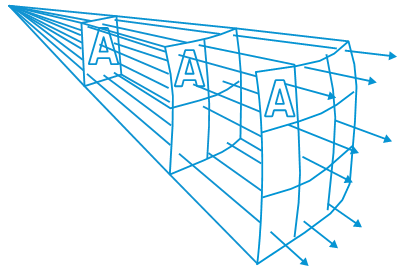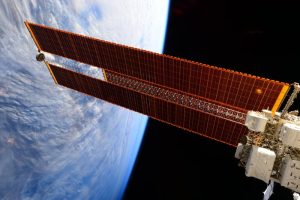Power from Sunlight – Powering space exploration with solar energy
In this set of activities, students will learn about two concepts that influence solar panel design for space missions: the inverse square law and the angle of incidence.
Students will perform two simple investigations using a photovoltaic cell (solar cell) and a light source.
First, they will measure how the power produced by the solar cells varies with distance from the light source and attempt to retrieve the inverse square law for light intensity experimentally.
Students will then conduct a second experiment to investigate the dependence of the power output for the solar cell with the angle of incidence. Lastly, they will apply these concepts to real ESA space missions.
Learning Objectives
Age range:
14 – 18 years old
Time
Preparation: 1 hour
Experiment Assembly: 20 minutes
Lesson: 1 hour and 30 minutes
Experiment Assembly: 20 minutes
Lesson: 1 hour and 30 minutes
Resource available in:
Activity 1: The inverse square law
In this hands-on activity, students will calculate the power output of a solar panel by measuring the electric current and electric potential difference and try to retrieve the inverse square law from their experimental measurements.

Equipment
Activity 2: The angle of incidence
In this activity, students will learn about the importance of the angle of incidence and the benefits of optimally positioning solar cells. Through an experiment, they will measure how the angle of incidence influences the power output.
Equipment
Activity 3: Exploring space with solar power
In this activity, students practice using the inverse square law in application to real ESA space missions. Students will discover how the properties of the inverse square law affect how large the solar panels have to be and how the angle of incidence is of critical importance for missions venturing close to the Sun.
Equipment
Did you know?
The International Space Station (ISS) is powered by solar panels. The image on the right shows some of the solar panels on the ISS, which is home to up to six astronauts at a time. As the ISS orbits Earth, the solar panels can be rotated to point more directly at the Sun. The panels span an area of 2500 m³ – that is equivalent to the size of half of a football field.

Solar panels on the ISS
Keywords:

AstroCrops – Growing plants for future space missions
Brief description: In this set of activities, students will build an understanding of germination and plant growth by following the development of three unknown plants

Moon Constitution – How would a future lunar community be organised?
Brief description: In this resource, pupils will debate some organisational and social characteristics of a future settlement on the Moon and relate it to their

AstroFarmer – Learning about conditions for plant growth
Brief description: In this set of six activities, students will investigate which factors affect plant growth, and relate these factors to growing plants in space.



